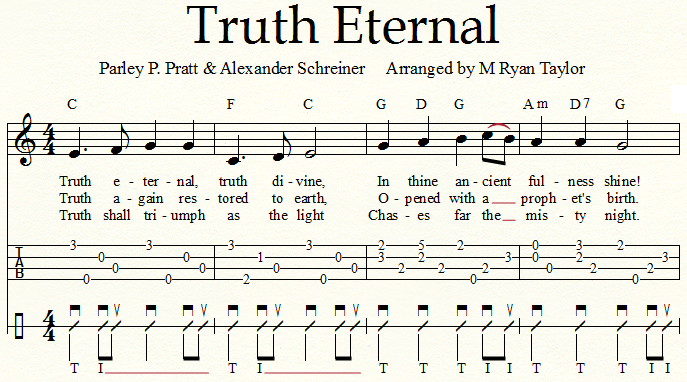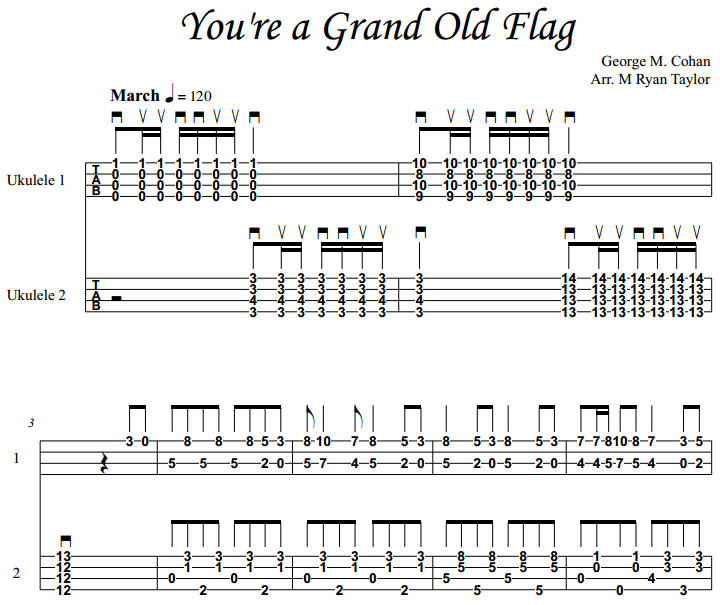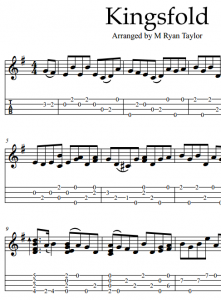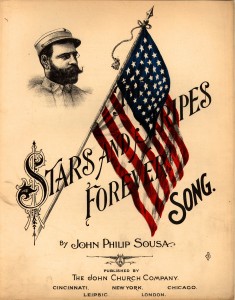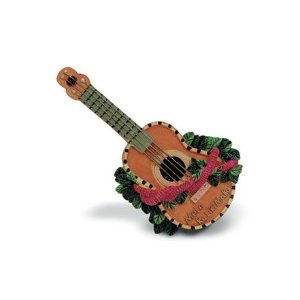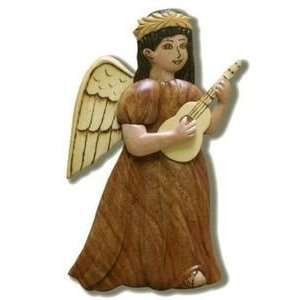Category Archives: Ukulele Arrangements
Chord Melody Arranging Part 2 : Transposing
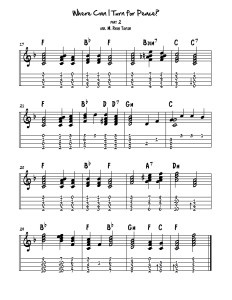 In the first part of this series I talked about some principles of chord melody arranging using the melody in the original vocal range with mostly ‘open position’ chords (the easy ones). This second part will talk about transposing the melody into standard ukulele range and using inversions of chords that are ‘up the neck.’ First you may want to print out a copy of the arrangement I’m using as an example:
In the first part of this series I talked about some principles of chord melody arranging using the melody in the original vocal range with mostly ‘open position’ chords (the easy ones). This second part will talk about transposing the melody into standard ukulele range and using inversions of chords that are ‘up the neck.’ First you may want to print out a copy of the arrangement I’m using as an example:
- Where Can I Turn for Peace (updated version with second page and added chord indications for reference purposes)
Transposing
One of the problems of arranging vocal melodies for the ukulele is that they tend to dip below the middle C that is the bottom of standard ukulele range. This is one of the main reasons there are strong supporters of low-G tuning, like James Hill (except for the Canadians it is low-A tuning). We tackled this challenge in part 1 of this series by transposing a section of the melody up an octave. Another common method of dealing with this problem is to transpose the entire melody up into ukulele range. Here are some steps that may help you with this process, using the second page of “Where Can I Turn for Peace?” as an example:
- Identify the lowest note in the melody you wish to arrange. In the example, the lowest note was an A below middle C with is a ‘minor third‘ (a whole-step plus a half-step) below the range of a standard-tuned uke. That means that in order to bring this into range we have to move all the notes up by at least a minor third.
- Bringing this melody up by a minor third would take us from the key of C (no sharps or flats) to the key of Eb (three flats). There aren’t a ton of open chords in that key, so I chose to go up another step higher to the key of F, which is a ‘perfect fourth‘ (two whole-steps plus a half-step) higher than the key of C. This key only has one flat in the key signature with a number of ‘open’ chord options.
- You’ll find the keys closest to C around the circle of fifths (learn more on wikipedia) are the easiest keys to play on the ukulele: F and G. These would be followed by D, A and Bb. These are generalizations; you might find the best key to transpose to is something odd, like Db (probably not).
- Whatever key you move to, you must make sure you move all the notes by the same interval. In this piece I’ve transposed up by a perfect fourth, so C becomes F, F becomes Bb, D becomes G, and so on.
- All of your chords need to be transposed up by the same interval; a C chord becomes an F chord, an F chord becomes a Bb chord, and so on.
- Once you have your melody and chords transposed you can begin looking for chord inversions that highlight the melody notes. You’ll be looking for notes to land on the 1st/A-string (see the first chord of measure 17) or on the 4th/G-string (see the last chord in measure 20). If the note is below these on the middle strings you can always strum a partial chord (see the first chord in measure 24).
- If you aren’t familiar with a ton of ‘up the neck’ chord inversions, cheat. Either use a ukulele chord dictionary or an online chord finder (ukebuddy.com). A reference makes it so much easier (I use one).
- If a melody note doesn’t belong to a chord (which happens often), you’ll need to add it to the chord (see the Bb on top of an F chord in measure 17 and the E on top of the Bdim7 in measure 19).
That’s about all there is to it. One of the awesome things about chord melody solos of this kind are that they force you to learn all those wonderful ‘up the neck’ chord inversions, opening all kinds of options for your playing, both instrumental and accompanimental.
Notation/tablature software (I use Finale, but there are free options like MuseScore) can help with transposing and take some of the chore out of it (of course, these have a learning curve of their own). Whatever method you use and however long it takes you to get there, there is nothing like the satisfaction of playing your own arrangement of a song.
Source Files
Get the source files (pdf, finale and music xml for import into other music editors) for the above arrangement under the ‘Files’ tab of the Joyful Noise! LDS Ukulele group on FaceBook. Also, if you’re interested in sharing your arrangements of hymns and Christ-centered spiritual songs, this is a great place to do it.
The Welti Solution : Chord Melody Arranging Part 1
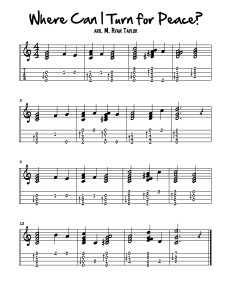 A good friend / former student asked me for some suggestions on solutions to a chord melody version of “Where Can I Turn for Peace?,” a well-known LDS hymn. He was working from the version included on page 30 of Hymns Made Easy (which includes chord indications above the melody). It was easier for me to illustrate by arranging this song than try to explain in an email, so here is my solution:
A good friend / former student asked me for some suggestions on solutions to a chord melody version of “Where Can I Turn for Peace?,” a well-known LDS hymn. He was working from the version included on page 30 of Hymns Made Easy (which includes chord indications above the melody). It was easier for me to illustrate by arranging this song than try to explain in an email, so here is my solution:
Some questions that arise in looking at this tune . . .
What do you do when some of the melody notes do not belong to the chords indicated in the music? This is a common thing in music of all stripes. Melodic notes that do not belong to the chord sequence add tension and interest to the melody. When arranging a chord melody solo you’ll need to incorporate these notes into the fingering, which means you’ll need to be able to find the note on its own in the first place (learn your C-scale to start with). For example, this hymn calls for a B-note over a C-diminished chord on in the third measure. When you change the C to a B in that chord, you end up with a B7 chord instead. You can see this in the arrangement above.
What do you do when a melody note is buried in the middle or bottom of the chord instead of being the top note? Wilfried Welti is a fairly well-known and respected ukulele arranger. I’m borrowing ‘the Welti solution’ to make this arrangement work. His answer lies in how you arpeggiate the chord you are playing. This is indicated by arrows in the arrangement that stop on the melody note you wish to highlight. An up-arrow indicates a motion from string 4 towards string 1, while a down-arrow indicates the opposite direction. You’ll note that where a melody note takes place on one of the inner strings, you stop the arpeggio on that string (see the arrangement above). Using this solution you can highlight any note of a chord.
What do you do when a melody note goes below the range of the ukulele? Lots of vocal melodies go below the C that is the lowest note on the ukulele. A popular solution is to put a low-G string on your uke, but let’s pretend that option doesn’t exist and you don’t want to string your ukulele like a mini-guitar. If we’re not willing to transpose the entire melody up into ukulele range, then we must make do somehow. One solution is to leave those notes out and to the imagination of the listener. Another is to transpose just that phrase of music up an octave. This latter option is what I’ve done at the end of the second line of music in the arrangement above.
Using these three techniques, you can create a lovely and convincing chord-melody arrangement in the ukulele’s lower range without transposing up into the higher fret-range of the instrument. I’ll talk about transposing the melody up to a ‘ukulele-friendly’ key in a future ‘part 2’ article on ukulele chord melody arranging.
Update: Now you can read part 2 on transposing! with an updated version of the arrangement.
Source Files
Get the source files (pdf, finale and music xml for import into other music editors) for the above arrangement under the ‘Files’ tab of the Joyful Noise! LDS Ukulele group on FaceBook. Also, if you’re interested in sharing your arrangements of hymns and Christ-centered spiritual songs, this is a great place to do it.
Twenty One Pilots Ukulele cover of Can’t Help Falling in Love With You
I was wondering why many of my young students were coming in and wanting to sing this classic song (originally from before I was born), but this helps explain it. This is a pretty easy one to learn using ‘level 3’ chords. Dr. Uke offers a song sheet here: http://www.doctoruke.com/canthelpfallinginlove.pdf
More new demos for The Haunted Ukulele
I recorded 5 more demos yesterday for my new book, The Haunted Ukulele:
- Halloween Carnival (an original!)
- The Haunted House (by Irving Berlin!)
- The Happy Cow Song (another original!)
- Hangman (my parody for kids on Tom Dooley)
- Old Roger (a circle game for kids from Great Britain)
Enjoy the entire Haunted Ukulele Playlist:
Chopsticks Tab for Ukulele
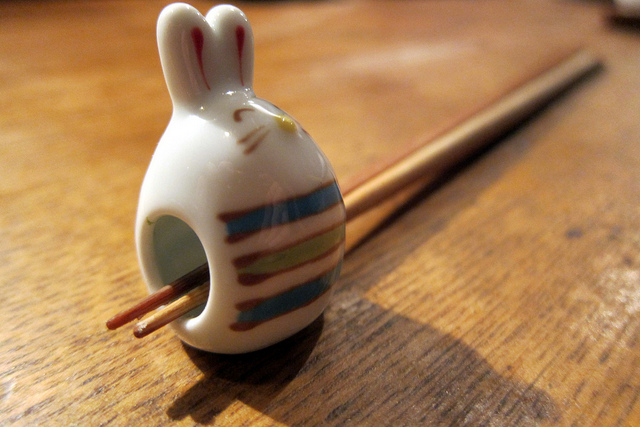 I was noodling around on my uke a few weeks ago when something started to sound familiar, “That’s Chopsticks.” So I took a few minutes and figured out the rest of the piece. The A-section is really easy and the B-section is a really great exercise for various double-stops (which I’ve included 2 different ways).
I was noodling around on my uke a few weeks ago when something started to sound familiar, “That’s Chopsticks.” So I took a few minutes and figured out the rest of the piece. The A-section is really easy and the B-section is a really great exercise for various double-stops (which I’ve included 2 different ways).
So here you go, the celebrated chopstick waltz:
- Chopsticks (PDF)
Enjoy!
Truth Eternal
- Truth Eternal (PDF download) by Parley P. Pratt and Alexander Schreiner, arranged by M. Ryan Taylor.
This simple arrangement provides a fingerpicking and strum pattern that can be used on alternating verses or combined with two to three ukuleles (with the melody picked).
Funiculi Funicula
- Funiculi Funicula – Neapolitan (original) pdf with uke chords
- Funiculi Funicula (Italian) pdf with uke chords
One of the all-time most popular Neapolitan songs (an Italian dialect), performed by countless tenors across the globe, including the big three. A fabulous song, all about the funicular railway on mount Vesuvius and love, of course.
The Spirit of God – New Ukulele Tablature
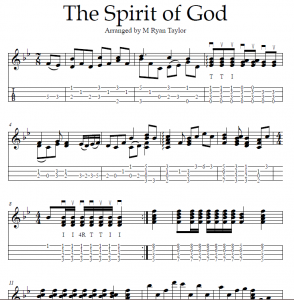 A new arrangement of one of my favorite hymns:
A new arrangement of one of my favorite hymns:
You can see and hear the original hymn at https://www.lds.org/music/library/hymns/the-spirit-of-god?lang=eng. The hymn has a long history, and was sung at the first LDS temple dedication in 1836. It is still sung today around the world in LDS congregations and at temple dedications.
Lyrics of the first verse and chorus:
The Spirit of God like a fire is burning!
The latter-day glory begins to come forth;
The visions and blessings of old are returning,
And angels are coming to visit the earth.
We’ll sing and we’ll shout with the armies of heaven,
Hosanna, hosanna to God and the Lamb!
Let glory to them in the highest be given,
Henceforth and forever, Amen and amen!
You can learn more at http://en.wikipedia.org/wiki/The_Spirit_of_God_Like_a_Fire_Is_Burning.
You’re a Grand Old Flag : Ukulele Duet
A classic piece of George M. Cohan Americana arranged for two or more ukuleles:
Enjoy!
Didn’t My Lord Deliver Daniel
One of my favorite spirituals in a variety of different versions:
- Didn’t My Lord Deliver Daniel (pdf)
- Didn’t My Lord Deliver Daniel 2-part (pdf)
- Didn’t My Lord Deliver Daniel 2-part with Descant (pdf)
- Didn’t My Lord Deliver Daniel Choir Only (pdf)
“He delivered Daniel from the lion’s den . . . then why not every man?”
Enjoy!
There is a Haunted House in Town
This parody of “There is a Tavern in the Town” is another of my Halloween favorites:
Enjoy!
Three Blind Mice
- Three Blind Mice (pdf)
The classic children’s song in two versions, regular and a special 1-finger chord arrangement with some altered melodic notes.
Enjoy!
Itsy Bitsy Spider
The classic children’s song in two versions, regular and a special 1-finger chord arrangement with some altered melodic notes.
- The Itsy Bitsy Spider (pdf)
Enjoy!
Mister Rabbit
A classic children’s folk song, just in time for Easter.
- Mister Rabbit (pdf)
There are a lot of variations on this wonderful tune; one of the most charming is Burl Ive’s rendition. Enjoy!
Blood on the Saddle
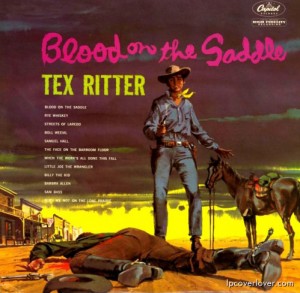 I love this parody of ‘Western’ cowboy songs (whose origin likely includes college glee clubs). It has enjoyed quite a bit of popularity with actual ‘Western’ folk artists (I recently bought a record of such, just because it had this track on it). However, the most famous recording comes from Tex Ritter.
I love this parody of ‘Western’ cowboy songs (whose origin likely includes college glee clubs). It has enjoyed quite a bit of popularity with actual ‘Western’ folk artists (I recently bought a record of such, just because it had this track on it). However, the most famous recording comes from Tex Ritter.
- Blood on the Saddle (pdf)
I like to program this song around Halloween; I’m a big fan of the humorous side of the holiday, I even have my own Halloween album and website for kids.
Two by Two : Round for 4 with Ukulele Chords
 Two by Two (pdf)
Two by Two (pdf)
An original round celebrating the Noah’s Ark story from Genesis. Provided with Ukulele, Baritone Uke & Guitar Chords.
FYI: One of the early ‘approved’ toys for children to receive at Easter time was a Noah’s Ark playset.
Another ‘Ark song,’ a spiritual, “The Old Ark’s A-Moverin’,” can be found in the 123 Ukulele Play Songbook.
Kingsfold : New Ukulele Tablature
- Kingsfold PDF (Ukulele Tablature Solo)
This famous tune has been used for hymn-texts such as “If You Could Hie to Kolob,” “O Sing a Song of Bethlehem” & “I Heard the Voice of Jesus Say.”
Arranged in a mostly ‘campanella’ style, a la John King.
Where is He? – Matthew 2:2 (Round for 3)
Though this round could be sung by anyone, I wrote it with 3 men in mind, representing the wise men from the east. Chords for ukulele, guitar and baritone ukulele are provided for an optional accompaniment.
Merry Christmas!
Text from Matthew 2:2
Where is he that is born King of the Jews? for we have seen his star in the east, and are come to worship him.
I’m a Giraffe
Round for 3 by M Ryan Taylor. Includes chords for ukulele and baritone ukulele.
Words:
I’m a giraffe, A giraffe am I; When I stand on my toes my nose bumps the sky.
Thirteen for Halloween : Ukulele Edition
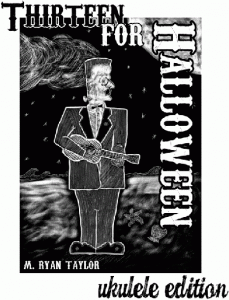 New for 2012! The long-awaited ukulele editon of Thirteen for Halloween (link goes to tradebit.com) is now available for instant download. This Halloween songbook contains ukulele chords (C tuning) AND chords for baritone ukulele.
New for 2012! The long-awaited ukulele editon of Thirteen for Halloween (link goes to tradebit.com) is now available for instant download. This Halloween songbook contains ukulele chords (C tuning) AND chords for baritone ukulele.
Includes all the songs from the Thirteen for Halloween album:
- Welcome Said the Spider
- The Ghost of John
- Three Little Ghostesses
- Mactavish Is Dead
- Skin and Bones
- Queen Nefertiti (The Mummy)
- Old Witch, Old Witch
- Witch, Witch, Where do you Fly?
- Im a Mean Old Witch
- Unlikely Company
- The Ghost Ship
- Were Back!
- Five Little Pumpkins
Get the matching “Frankenstein on the Beach” ukulele t-shirt (link takes you to printfection.com)!
For more Halloween fun, visit ThirteenforHalloween.com. For more ukulele awesomeness, visit UkulelePlay.com.
March of the Spiders – Easy Ukulele Chord Solo by M Ryan Taylor
 From my ‘work in progress’
From my ‘work in progress’
entitled The Giant’s Heart:
- March of the Spiders (PDF Tablature)
Back story: I’d been working on a new opera entitled The Giant’s Heart, but when I got to the scene about the giant spiders I knew I wanted the spiders to be represented musically by fretted string instruments, but beyond that I was stuck. I halted work on the opera and the next Winter got into the ukulele. Some time later I was messing around and thought, “That’s the march of the spiders” (when they go up the mountain to chase away the she eagle that is sitting on the giant’s heart).
Its taken me a while to get it down on paper, as I use Finale and it is not really that tablature friendly, but I’ve decided to bite the bullet and just push through the learning curve and the hurdles the program makes you go through.
Hope you enjoy!
‘O Sole Mio
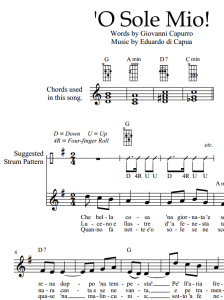 One of the most famous Italian (Neapolitan) songs of all time and sung by everyone from the Three Tenors to Elvis Presley (as It’s Now or Never):
One of the most famous Italian (Neapolitan) songs of all time and sung by everyone from the Three Tenors to Elvis Presley (as It’s Now or Never):
- ‘O Sole Mio (for Voice and Ukulele)
The Stars and Stripes Forever : Ukulele Chords with Words by John Phillip Sousa (3 keys available)
Here is John Phillip Sousa’s famous march, The Stars and Stripes Forever, with words he penned himself. I originally started singing this with an old recording of Sousa’s own band, but don’t always want to haul sound equipment around and I love singing it. The melody covers a two-octave range, so you do need some pipes, but if you’re ukulele is strung with a low-g, you can play the melody solo while having another player fill in on the chords.
- Stars and Stripes Forever – Eb (Original Key) : With this key you could actually sing along with a recording of the march, but I’ve always found a couple of spots high for my voice.
- Stars and Stripes Forever – D (Easier)
- Stars and Stripes Forever – C (Easiest) : Now that I’ve transposed it down, I’m loving how this key feels in my voice (I’m a baritone), and the key makes it super easy to play.
Have fun with it!
Ex amore victoria!
Ryan
We Wish You a Merry Christmas Sheet Music for Ukulele and Voice
First off, the music:
I love this song and I love the fact as a teacher that it cycles you through so many useful chords in a progression that will ‘bless your life’ for use with future songs. This one page PDF of We Wish You a Merry Christmas for Ukulele (and Voice) also contains a nice-sounding fingerpicking pattern that shows off the cool chord progression of this song. Here’s a basic roadmap of the song:
- The Thumb (T) alternates between the 3rd and 4th strings while the Index and Middle fingers (I/M) work together as a unit to pluck the 1st and 2nd strings at the same time. The pattern has three beats: T on 3rd string, I/M on 1st/2nd, and T on 4th string – the pattern then repeats.
- See the score for a slight alteration of the pattern on the words “Happy New Year.”
- An alternate strum pattern is provided for the middle verses of the song. I think it’s a fun contrast to play this part really fast (it brings out the humor of this section).
- On the final chorus you return to the fingerpicking pattern.
It’s all there in the instructions on the sheet music.
This arrangement was created for the Utah Ukulele Circle which meets in American Fork on Tuesday nights. We performed it twice in 2011; Christmas in the Rotunda at American Fork Library and at Heritage Care Center a couple of days later for the old folks there.
Merry Christmas!
O Holy Night for Ukulele, Voice and optional Bass
First off, here is a free version of “O Holy Night” with the words, melody, and ukulele chords:
- O Holy Night – Voice & Ukulele Chords (Free Version)
A premium version of this ukulele arrangement (for advanced beginners and intermediate players) with suggested fingerpicking and strumming patterns in tab and traditional notation, as well as melody, words and chords can be downloaded through tradebit. There is also an optional bass part for duos or ukulele ensembles. A preview is available on these pages:
This arrangement was created for the Utah Ukulele Circle which meets in American Fork on Tuesday nights. We performed it twice in 2011; Christmas in the Rotunda at American Fork Library and at Heritage Care Center a couple of days later for the old folks there. I added the Bass Part for future use, as I’m also a bass player.
Merry Christmas!

